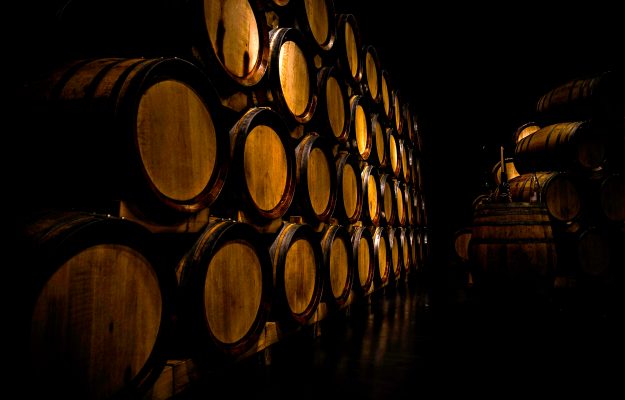A large part of the wine world is undoubtedly in distress due to the market crisis caused by Covid-19. However, as we have written often over recent months, it has not affected the volumes as much as the values of wine consumption. Looking at the WineNews analysis on the surveys of the Chambers of Commerce, the original prices of some of the biggest and most famous Italian appellations have resisted, at least their latest updates do not show a very different picture from the one snapped 6 months ago, in October 2020. It is worth noting that the numbers are approximate, net of VAT and ex-winery. The picture shows the average on a wine market, and during actual negotiations the difference is made up by many factors, like the origin of the wine batch, quantity, the different needs of those who sell and buy, or of supply and demand.
It needs to be emphasized, though, that these are the values on which an instrument like the revolving pledge on wine is based, which several of the topmost territories have adopted, at least as a possibility, through agreements with credit institutions and certification bodies like Valoritalia, for instance. At any rate, starting from Piedmont, according to the Chamber of Commerce of Cuneo, Barolo (prices refer January / February 2021) values come up between 577 and 622 euros per hectoliter for the 2016 harvest, and between 551 and 658 euros in 2017, while Barbaresco prices were 490-550 euros in 2017, and 476-490 euros in 2018. The data from the Asti Chamber of Commerce, however, showed that Barbera d'Asti wavers between 100 and 160 euros per hectoliter, while the values for Barbera d'Asti Superiore fluctuate between 160 and 270 euros, and values range between 250 and 350 euros per hectoliter for Nizza. The musts suitable to become Asti and Moscato d'Asti DOCG, instead, range between 155 and 160 euros per hectoliter. According to the Chamber of Commerce of Alessandria, Gavi varies between 200 and 280 euros per hectoliter. Going to Veneto, data from the Verona Chamber of Commerce revealed that Amarone della Valpolicella and Recioto prices range between 750 and 800 euros per hectoliter for the 2016 and 2017 harvests, while the Classic version is higher, between 780 and 830 euros, as well as wine suitable for Amarone and Recioto 2018. Prices range from 130-150 euros per hectoliter for Valpolicella 2019 DOC, between 150 to 180 euros Classico, and from 260 to 300 euros for wine suitable to become Ripasso. Among the still whites, Lugana 2020 fluctuates between 230 and 260 euros per hectoliter, while Soave Classico reaches prices between 100 and 115 euros, and Pinot Grigio delle Venezie prices have been reported between 80 and 95 euros per hectoliter. According to the Treviso Chamber of Commerce, Prosecco DOC fluctuates between 160 and 165 euros per hectoliter, Asolo DOCG between 185 and 195 euros, while Conegliano Valdobbiadene Prosecco Superiore DOCG reaches 200-210 euros per hectoliter, and 205 -230 euros for Rive.
In Tuscany, according to the most recent surveys of the Siena Chamber of Commerce, Brunello di Montalcino prices range from 900 to 1.000 euros per hectoliter for the 2015 and 2016 harvests, it while it fluctuates between 600 and 900 euros for the 2017, 2018 and 2019 harvests (formally, wine “capable of becoming Brunello”, ed.). Chianti Classico, instead, oscillates between 245-290 euros per hectoliter for the 2020 vintage, and 270-315 euros for the 2016 harvest. The prices of Vino Nobile di Nobile di Montepulciano have been constant, ranging between 330 and 380 euros for the 2016, 2017-2018 vintages, while Chianti prices range between 103 and 125 euros for the 2020 vintage, and 123-150 euros for the 2017 vintage. Vernaccia di San Gimignano, the most famous white appellation of the Region, is quoted between 130 and 150 euros per hectoliter for the last three harvests. This is obviously only a partial picture on many of the most important Italian denominations, for value and volume, which despite undeniable challenges, have resisted, due to the fact that many of them see their wines enter the market a few years earlier or later, after the harvest.
The wines that seem to be suffering the most, according to ISMEA data, are table wines. Whites, in March 2021, registered prices of 2.58 euros per hectograde between 12 and 13 percent alcohol content (-11.2% on 2020), and between 9 and 11 percent at 3.45 euros (-12.4%). Red wines value was 4.09 euros per hectograde between 12 and 13 percent (-4.3%), and 3.94 euros between 9 and 11 percent (-6.7%).
It is a complex and varied picture, as always in the case of Italian wine. In order to be appropriately supported to recover from the Pandemic, it requires general support measures as well as, and as far as possible, tailor-made measures for different situations. For example, the different positions of the supply chain organizations regarding the extent of crisis distillation for PDO and PGI wines, put on the “Wine Table” of the Ministry of Agriculture, along with many others, as we reported yesterday, and for which funds are being sought, as the Undersecretary for Agricultural Policies (Gian Marco Centinaio) commented to WineNews. “Maybe not for everyone, but resources must be found because the supply chain has suffered and must be supported”, said Centinaio.
Copyright © 2000/2025
Contatti: info@winenews.it
Seguici anche su Twitter: @WineNewsIt
Seguici anche su Facebook: @winenewsit
Questo articolo è tratto dall'archivio di WineNews - Tutti i diritti riservati - Copyright © 2000/2025









































































































































































































